Essential Requirements for a Memorable Snowboarding Experience

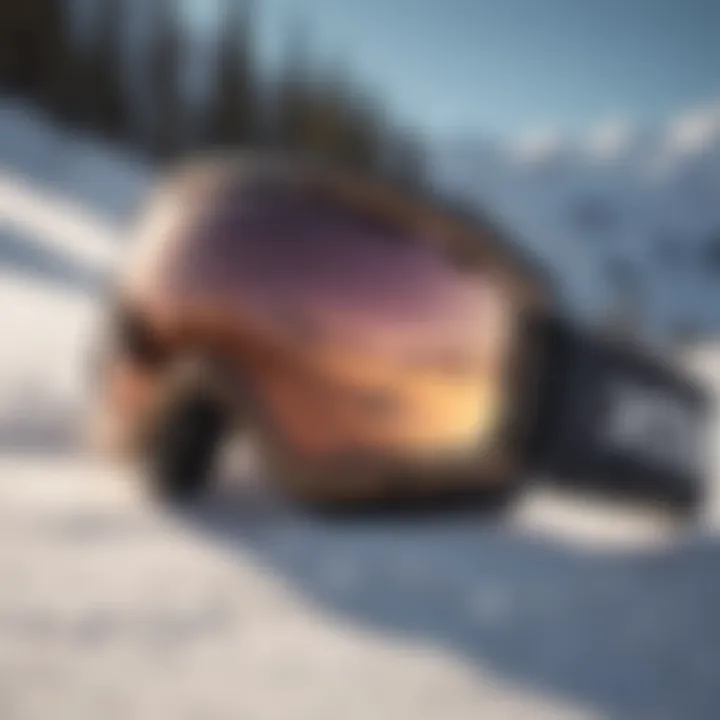
Intro
Snowboarding has captivated the hearts of adventure seekers and winter sports enthusiasts alike. It is not merely a sport but a unique blend of skill, style, and thrill that attracts many to the slopes each winter. But before you strap on that snowboard and glide down a mountain, it's vital to understand what goes into preparing for this exhilarating activity.
Extreme Sports Overview
Definition of Extreme Sports
Extreme sports encompass activities that often involve a high degree of risk and require specialized skills and equipment. They usually take place in a variety of settings, from urban environments to the great outdoors, where the element of danger is inherent, heightening the thrill factor. Snowboarding fits snugly into this category, offering adrenaline-pumping action and a close connection to nature.
History and Evolution
Snowboarding's roots can be traced back to the 1960s and 1970s. It began with a few innovative enthusiasts looking to combine surfing and skiing into a fresh approach to sliding down snow-covered slopes. In the early days, makeshift boards were constructed from wood, metal, and even repurposed snowboard designs. As the sport gained popularity, formal equipment began appearing. By the 1990s, snowboarding had solidified its place in winter sports, even being included in the Olympic Games.
Popular Extreme Sports Disciplines
Snowboarding is not alone in the realm of extreme sports. Other disciplines, each with its unique flair and demands, have also gained traction. Some notable mentions include:
- Skiing: Often considered a sibling to snowboarding, skiing offers its own set of techniques and culture.
- Mountain Biking: Riders tackle rough terrains and steep descents, much like snowboarders on mountain slopes.
- Rock Climbing: This activity tests both physical strength and mental resilience, pushing climbers to their limits.
- Skydiving: The ultimate thrill of free-falling from an aircraft, offering unmatched adrenaline rush.
Gear and Equipment
Essential Gear for Different Sports
When it comes to snowboarding, having the right gear is crucial. The essentials include:
- Snowboard: Choosing the right size and type can vastly affect your performance. Consider factors such as length, width, and design tailored to your skill level.
- Bindings: Proper binding fitment is vital for control and comfort on the board.
- Boots: Snowboard boots should be snug yet comfortable, allowing for optimal movement while keeping warm.
- Protective Gear: Helmets, wrist guards, and knee pads can be lifesavers, especially for beginners.
Gear Reviews and Comparisons
It is wise to stay updated with current snowboard gear reviews. Familiarizing yourself with various options can help you make informed decisions. Prominent sources like Reddit often showcase user experiences, while sites like Britannica provide detailed insights into the technicalities of the equipment.
Safety Ratings and Certifications
As safety remains paramount, understanding safety ratings plays a significant role in gear selection. Look for certifications on helmets and pads — organizations such as the ASTM (American Society for Testing and Materials) ensure that equipment meets safety standards.
Training and Preparation
Physical Conditioning and Fitness Tips
Your physical fitness is just as important as having the right gear. Engaging in strength training, balance exercises, and cardiovascular workouts can enhance your performance on the slopes. Common exercises include:
- Squats: To build leg strength.
- Core workouts: Essential for overall balance.
- Cardio: Maintaining stamina is key for long days on the mountain.
Mental Preparation Techniques
Snowboarding demands mental sharpness, especially with tackling new terrain. Visualization techniques or even meditation can aid in boosting confidence on challenging runs.
Training Regimens for Various Sports
If you’re looking to advance in snowboarding, consider enrolling in lessons or clinics. Professionals can offer personalized tips tailored to your skill level, refining your techniques and ensuring you grasp all safety aspects.
Locations and Destinations
Top Destinations for Extreme Sports
Here are a few famous spots for snowboarding enthusiasts:
- Whistler Blackcomb, Canada: Known for its massive terrain and long season, it’s a haven for advanced riders.
- Jackson Hole, Wyoming: A challenging destination famous for its picturesque views and difficult runs.
- Chamonix, France: Offers breathtaking scenery and a mix of slopes for all levels of expertise.
Travel Tips and Guides
When planning your snowboarding trip, consider travel insurance to cover potential risks. Choosing the correct season for your destination plays a critical role, as conditions can differ vastly.
"Preparation is the key to success. The more ready you are, the more you’ll enjoy your time on the slopes."
By covering these aspects, this guide will assist in ensuring that you're prepared for all that snowboarding has to offer. Take your time, make informed decisions, and most importantly, enjoy every moment on that board.
Intro to Snowboarding
Snowboarding is not just a sport; it's a lifestyle that envelops enthusiasts in its thrilling embrace. The act of gliding down a snow-covered slope with the wind swirling around creates an exhilarating sense of freedom that is hard to replicate. This section serves as a gateway to understanding snowboarding, shedding light on its importance and the various dimensions that encompass this snow-filled adventure.
Understanding snowboarding requires grasping its technical aspects and the culture that surrounds it. With a unique blend of art and athleticism, snowboarding pushes physical boundaries while fostering a community bound by shared experiences and the great outdoors. The importance of getting a feel for these elements can't be underestimated. This lays the groundwork for a better appreciation of the nuances involved, enhancing one’s overall experience on the slopes.
The Evolution of Snowboarding
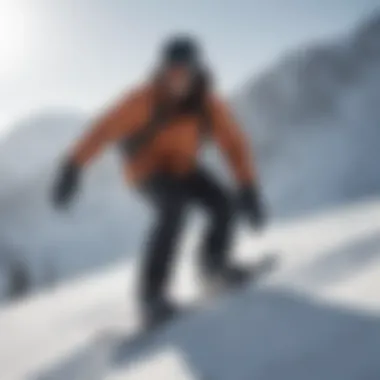
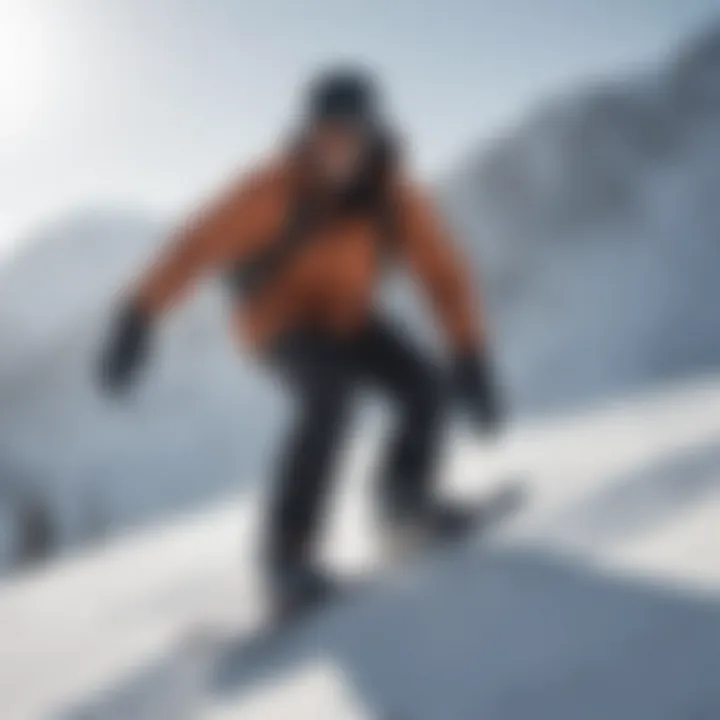
Snowboarding, in its modern form, has roots that stretch back to the 1960s, although its earlier experiments in sliding on snow can be traced even further. The first snowboard, created in 1965 by Sherman Poppen, was a simple contraption known as the "Snurfer," combining elements of surfing and skiing. As the years rolled on, innovations bloomed through the contributions of various pioneers. In particular, Jake Burton Carpenter established the Burton brand in 1977, which propelled the sport into the limelight.
By the late 1980s, snowboarding became increasingly mainstream, leading to ski resorts adopting policies to welcome snowboarders. This shift was monumental, marking the transition from a fringe activity to an integral player in winter sports. The development of halfpipes and terrain parks further pushed the sport, offering platforms for displays of skill and creativity that attracted an entirely new generation of participants.
Understanding the Snowboarding Culture
Snowboarding is underpinned by a rich culture that celebrates individuality, freedom, and a connection to nature. It's not just about the act of boarding – it's about the community formed around it. From casual shred sessions with friends to global competitions, the culture thrives on passion and camaraderie.
Key elements of snowboarding culture include:
- Inclusivity: Snowboarding encompasses a diverse set of individuals, welcoming all skill levels, backgrounds, and ages.
- Style: The art of expression is significant, with riders showcasing personality through clothing, board graphics, and riding styles.
- Community Events: Many terrains host competitions, festivals, and gatherings that strengthen social bonds and celebrate accomplishments.
Ultimately, understanding snowboarding is about connecting these dots. It's not merely about picking a board and heading to the slopes; it’s about embracing a lifestyle filled with passion, community, and adventure.
Essential Gear for Snowboarding
Having the right gear for snowboarding isn’t just about style; it’s a fundamental part of ensuring a positive and safe experience on the slopes. Snowboarding requires equipment that matches both the rider's personal needs and their riding style. The right equipment can significantly affect performance, comfort, and safety, making it vital to choose wisely.
The snowboarding journey begins with a solid understanding of the various types of gear necessary for the sport. Each piece of gear plays a unique role—from the snowboard itself to boots, bindings, helmets, and outerwear. These elements don’t merely complement one another; they work in unison to define the entire snowboarding experience.
Let’s dive into the specifics of the essential gear, highlighting the various aspects that beginner and seasoned snowboarders alike should consider when gearing up for their next adventure.
Snowboard Types and Selection
When selecting a snowboard, knowing the types available is crucial. Snowboards are generally categorized into three main types: all-mountain, freestyle, and powder.
- All-mountain boards are versatile and designed for various conditions, making them a popular choice for both beginners and advanced riders.
- Freestyle boards are lighter and shorter, aimed at individuals who enjoy tricks and park features. Their design helps with maneuverability and spins but may not perform as well in deep snow.
- Powder boards, on the other hand, are aimed at those who thrive in deep powder and backcountry riding. They typically have a larger nose and a narrower tail to help with flotation in deep snow.
Selecting the right snowboard requires understanding your personal riding style, ability level, and the conditions most commonly encountered. A mismatch here can lead to frustration or injury— it’s critical to do your homework before making a purchase.
Bindings: Importance and Adjustment
Bindings are as important as the snowboard itself. They serve as the connection between the rider and the board, allowing for movement and control. Bindings also come in different types, such as strap-in and rear-entry styles.
It’s not enough to just choose a good pair; proper adjustment is vital.
- Fit: Bindings should fit snugly around your boots without cutting off circulation.
- Stance: The angle and width of your stance affect balance and comfort.
- Flexibility: The flexibility of the bindings should match your riding style, with softer bindings for freestyle riding and stiffer for aggressive or all-mountain use.
Neglecting the right binding setup can lead to pain or even accidents on the slopes, making this detail significant for all snowboarders.
Boots: Comfort and Fit
Boots are your best friend on the mountain, particularly since your foot comfort can make or break your snowboarding experience. The right boots should offer not only a snug fit but also sufficient support.
- Lacing Systems: Options vary from traditional laces to quick-pull systems and Boa closures. Each has its pros and cons, with quick-pull systems typically offering ease in adjustments.
- Insulation: Warmth is essential, especially in colder climates. Boots with thicker insulation can keep your toes toasty even on frigid days.
- Stiffness Ratings: These vary among different pairs and should align with your riding ability—stiffer boots offer more control and responsiveness, while softer boots are better suited for those just starting out.
The wrong pair can lead to numb feet and painful rides, hence investing time in finding the right match is essential.
Helmets and Protective Gear
Safety should never be compromised in snowboarding. Helmets are non-negotiable, as they protect against serious head injuries. It’s worth noting that not all helmets are created equal, with designs varying in construction and fit.
- Materials: Look for lightweight yet sturdy materials. Many helmets use expanded polystyrene foam for shock absorption.
- Ventilation: Proper airflow can prevent overheating when making those uphill treks.
- Additional Protection: Don’t overlook wrist guards, padded shorts, and knee pads, which can lessen the impact of falls.
All these elements combined contribute to more enjoyable days on the mountain, free from the worry of accidents.
Choosing the Right Outerwear
When it comes to snowboarding, your outerwear can either hinder or enhance your experience. Well-thought-out layers will keep you warm and dry, allowing you to focus on the slopes instead of your discomfort.
- Waterproofing: Look for a good outer layer with waterproof specs, using fabrics that can withstand the elements—Gore-Tex is a common choice.
- Breathability: As you ride, moisture needs to escape to keep you comfy. This is where breathability ratings come in handy.
- Fit and Mobility: Ensure your outerwear allows for a full range of motion. Tight-fitting jackets or pants can impede your flexibility, affecting performance.
Ultimately, good gear keeps your body warm and comfortable, allowing you to perform at your best without distractions.
"Investing in quality snowboarding gear not only enhances your performance but also ensures safety on the slopes, making every ride a pleasure rather than a pain."
Physical Preparation for Snowboarding
Physical preparation plays a critical role in ensuring a fun and safe snowboarding experience. Depending on snowboarding for sheer enjoyment can be deceiving; a solid base of fitness can dramatically change how you take to the slopes. Without some preamble of preparation, even the most exciting mountain runs can turn daunting, especially when the muscles are strained or unconditioned. Putting your body through the wringer of snowboarding without adequate fitness can lead to poor performance, increased fatigue, and even injuries. Thus, it's essential to engage in a consistent physical preparation routine before hitting the snowy peaks.
Basic Fitness Requirements
To set the stage for successful snowboarding, establishing certain fitness benchmarks is crucial. Generally, a snowboarder should possess a fair bit of cardiovascular endurance, muscular strength, and core stability. These factors are what will help you dart down a slope, maintain balance, and position yourself correctly during tricks or turns.
Some basic fitness guidelines for snowboarders include:
- Cardiovascular Endurance: Activities like running, biking, or swimming can augment your stamina. Aiming for at least 30 minutes of moderate cardio several times a week is a good place to start.
- Muscle Strength: Focus on major muscle groups like your legs, back, and core. Weight lifting or bodyweight exercises like squats and lunges can be quite beneficial.
- Core Stability: Having a strong core helps you maintain balance and control on the board. Planks and stability ball exercises should be a staple in your routine.
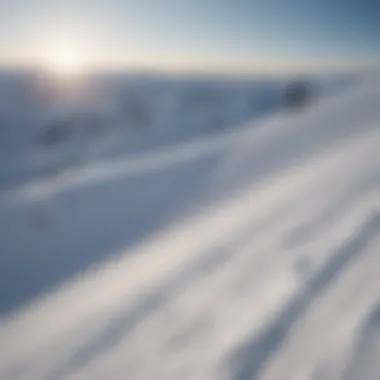

Incorporating these elements will lay a strong foundation for your snowboarding sessions.
Strength and Endurance Training
Strength and endurance are like two peas in a pod; each complements the other, particularly when it comes to enduring a long day on the slopes. While strength helps you perform maneuvers with power, endurance ensures that you can keep going until the last chair lift of the day.
Some effective strength training approaches include:
- Weight Training: Focus on compound movements such as deadlifts, bench presses, and squats. These exercises engage multiple muscle groups at once, mimicking the demands of snowboarding.
- Circuit Training: Set up a series of exercises that work different muscle groups, done back to back without rest. This improves muscle strength while also building stamina.
On the endurance front, take to the trails or gym cardio machines. Running or cycling at a steady pace builds the necessary endurance, allowing you to brave long runs without feeling winded. Aim for at least two to three endurance sessions every week, and gradually increase intensity and duration as your fitness improves.
Balance and Flexibility Exercises
Snowboarding hinges on balance and flexibility. Anything from twisting motions to landing jumps requires your body to move in a fluid, controlled manner. Developing good balance and flexibility can help prevent injuries while refining your technique on the board.
Some recommended exercises include:
- Balance Boards: Utilizing a balance board can seriously boost your stability as it mimics the motions of snowboarding. It trains the body's proprioception and helps with adjusting to shifts in weight.
- Yoga or Pilates: Engaging in yoga or Pilates not only increases flexibility but also promotes core strength and awareness. Simple poses like the Warrior or balancing ones such as Tree pose can do wonders for your overall movements on the board.
- Dynamic Stretching: Implement dynamic stretches like leg swings and arm circles as part of your warm-up routine to improve range of motion.
"Building a better balance won't just help on the slopes; it will also enhance everyday activities!"
In summary, physical preparation for snowboarding is not just an option; it's a necessity. From basic fitness benchmarks to specific strength, endurance training, and essential exercises for balance and flexibility, the better prepared you are, the more enjoyable your snowboarding experience will be.
Environmental Considerations
When snowboarding, it’s not just about having the right gear or skills; understanding the environment is just as crucial. The conditions of the snow, temperature fluctuations, and overall weather can drastically affect your performance and safety on the slopes. The right environmental factors can make a day of snowboarding unforgettable, while poor choices can lead to discomfort or even danger.
Selecting the Right Snow Conditions
Snow conditions are paramount for a successful snowboarding experience. The type of snow you encounter can change everything from how your board feels beneath your feet to how well you maintain balance. Tackling fresh powder is a dream for many snowboarders, offering that buoyant sensation, making it easier to maneuver. Conversely, icy or hard-packed snow can be treacherous, causing instability and heightening the risk of falls.
Here are some snow types to consider:
- Powder: Soft, fresh snow ideal for carving turns and floating.
- Packed Powder: A compressed layer that’s relatively smooth, offering a good mix of grip and glide.
- Icy Conditions: Often found in the afternoon or after rain, requiring more skill and precaution.
Understanding how your snowboard interacts with these conditions will enhance your performance. Novices should seek out well-groomed trails, while seasoned snowboarders might thrive in challenging conditions.
Weather Forecast and Its Impact
The weather is that elusive beast that can change your snowy dreams into a nightmare if you're not prepared. Always check the forecast before you head out. It’s not just about snow—wind, temperature, and visibility all play significant roles in the snowboarding experience. For example, high winds can affect your control, while low visibility can lead to dangerous conditions.
Key weather factors to review include:
- Temperature: Warmer days can soften snow, altering your ride significantly.
- Wind Speed: High winds can limit visibility and stability.
- Precipitation: Fresh snowfall can create powder conditions, yet too much can lead to closures or dangerous avalanche risks.
"Always be a little paranoid about checking the weather when planning your snowboarding day. It can be the difference between a great ride or a whole lot of trouble."
Ultimately, environmental considerations are not just background details; they’re your ticket to understanding the mountains better. Engaging wisely with nature elevates the snowboarding experience, ensuring your thrills don’t turn into spills.
Safety Practices in Snowboarding
In any sport as thrilling as snowboarding, understanding safety practices can make a world of difference. Snowboarding, while offering exhilarating experiences, poses its share of risks. Those who hit the slopes should equip themselves with knowledge about potential hazards and how to mitigate them. This segment has been designed to delve into the imperative aspects of safety, emphasizing its benefits and crucial considerations that should be taken into account when engaging in this sport.
Understanding Snowboarding Risks
Before strapping on your board, it’s critical to acknowledge the inherent risks involved in snowboarding. Falling is a part of the game; however, accidents can lead to severe injuries, especially if safety measures are not observed. The most common injuries are fractures, sprains, and head injuries. According to various studies, a significant percentage of snowboarders sustain injuries during their first few sessions, partly due to lack of experience and understanding of their limitations.
One of the greatest challenges is navigating through obstacles, be it trees, rocks, or other snowboarders. Inexperienced snowboarders often misjudge their speed and ability to control their descent, leading to dangerous situations. Thus, being aware of one's skill level and the terrain plays a substantial role in ensuring a safe snowboarding experience.
Key Risks to Consider:
- Fall Impact: Landings can be unforgiving if proper techniques aren’t used.
- Collisions: Other snowboarders or skiers on the slope can pose serious threats.
- Weather Conditions: Poor visibility or sudden changes in weather can dramatically affect safety.
"Preparation and understanding are as vital as the gear you wear when embarking on snowy adventures."
Safety Gear: What You Should Wear
Wearing the right safety gear is essential for reducing the likelihood of injury. It’s not just about having a cool look; the right equipment can mean the difference between a minor mishap and a serious accident. Here’s a rundown of must-have items:
- Helmets: A well-fitted helmet is a game-changer. A substantial number of head injuries can be avoided with proper head protection.
- Wrist Guards: Many beginners often overlook wrist protection. Given the tendency to extend hands during falls, wrist guards can prevent fractures.
- Knee Pads: These are especially useful for those just starting out. They protect against impacts in case of falls.
- Padded Jackets and Pants: These gears can absorb shock and reduce injury from falls, offering an extra layer of protection.
- Goggles: Protecting your eyes from glare and wind is key for safe navigation.
Overall, choosing appropriate safety gear is a proactive step that significantly enhances your safety on the slopes.
Proper Etiquette on the Slopes
While safety gear is a vital part of snowboarding, so too is proper etiquette on the slopes. Snowboarding is a communal activity, and maintaining good relationships with fellow riders can prevent mishaps.
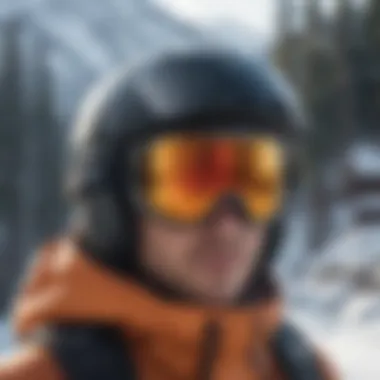

Here are some crucial etiquette tips to keep in mind:
- Stay in Control: Always know your speed and be able to stop or avoid obstacles or other snowboarders.
- Communicate Your Intentions: If you’re planning to stop or change direction, signal to others around you rather than suddenly halting.
- Respect the Right of Way: The downhill rider has the right of way. Be aware of who is around you at all times.
- Avoid Stopping in Reckless Areas: If you need to take a break, move to the side of the slopes, away from the main path, to avoid obstructing traffic.
- Yield to the Less Skilled: Remember that many snowboarders and skiers may be beginners. Give them room and time to get comfortable on the slopes.
Skill Development
Skill development in snowboarding is paramount. It does not merely contribute to performance; it shapes the entire experience on the slopes. A well-rounded skill set enhances your enjoyment and safety. It’s like building the foundation of a house; without it, everything else feels risky. When you’re confident in your abilities, you’re more likely to tackle challenges and try new tricks, allowing you to fully immerse yourself in the thrill of snowboarding.
Being adept in snowboarding opens up endless possibilities, whether carving down a mountainside or mastering those beautiful aerial tricks. Each level of skill requires dedication and an understanding of various techniques that are fun to learn but critical for an enjoyable experience.
Taking Lessons: The Value of Instruction
Enrolling in lessons can be a game changer, no matter your starting point. An instructor provides tailored advice and guidance, helping you to grasp essential techniques and avoid common pitfalls. Having someone there to demonstrate proper posture and movement—like leaning into a turn or distributing your weight correctly—can accelerate progress dramatically.
Additionally, learning in a group setting encourages camaraderie and makes the process more engaging. You can share the experience with fellow snowboarders, which often leads to a supportive atmosphere. It’s worth remembering, though, that even the most qualified instructors cannot replace practice. Lessons are vital in planting the seed, but consistent effort is necessary for growth.
Practicing Core Techniques
After taking lessons, practice becomes your best friend. Mastering core techniques forms the backbone of skill development. Focus on fundamental movements like bending your knees, shifting your weight, and absorbing movements with your entire body. These critical skills ensure that you remain in control and balanced, especially when dealing with uneven terrain or sudden obstacles.
Consider setting up a repeatable practice regimen on the slopes. Here are some core techniques to include in your sessions:
- Carving: Learn to make smooth turns without losing speed.
- Stopping: Know how to halt safely while maintaining your balance.
- Jumping: Start with small hops and work your way up to bigger jumps.
By repeatedly honing these techniques, you'll build muscle memory, making complex maneuvers feel more natural.
Progressing to Advanced Skills
Taking your skills to the next level involves pushing beyond the basics. As you become comfortable with core techniques, it’s time to dabble in advanced skills, which can range from off-piste riding to developing your freestyle tricks.
Moving into more challenging terrain can develop your adaptability and foster confidence. Many snowboarders find that they gain abilities they didn’t know they had. Be sure to approach progression with caution and respect the sport; there's no rush. Learning how to navigate varied snow conditions, handle different slopes, and engage with more challenging tricks will ensure you don’t overextend yourself.
Always balance ambition with safety by wearing the necessary gear and selecting appropriate conditions. You might want to seek out more experienced riders to share insights or challenge yourself in ways that are constructive.
"The best ski and snowboard instructors are not just masters of technique; they can read your body language and performance, suggesting modifications on the fly, giving you instant feedback to improve faster."
Post-Snowboarding Considerations
After a long day on the slopes, it's crucial to think about the steps that follow your exhilarating ride. Post-snowboarding considerations are not just about winding down; they play a significant role in ensuring that you continue to enjoy snowboarding in the future. This section revolves around gear maintenance, injury management, and evaluating your overall experience. These elements are key to maximizing both the longevity of your equipment and your personal safety.
Proper Gear Maintenance
Once you’ve taken off your snowboard, the work is not done. Proper gear maintenance is vital to protect your investment and ensure that your equipment is ready for your next adventure. Start by cleaning your snowboard. Snow and ice can lead to rust or damage if left unattended. Use a damp cloth to wipe down the board and remove any debris, especially from the base and edges. A little preventative care goes a long way.
It’s also important to dry your gear thoroughly. Store your snowboard in a cool, dry place, ideally in a board bag that can keep dust and moisture at bay. Additionally, every few outings, tune your snowboard. This can include waxing the base for speed and smoothness and sharpening the edges for better control. By regularly keeping your equipment in top shape, you’ll find yourself gliding down those slopes more effortlessly.
"Taking care of your snowboard and gear is like tending to a sports car—neglect it, and you’ll regret it later."
Injury Management and Recovery
Even the most experienced snowboarders can find themselves in a pinch. Injury management is critical. If you're feeling sore, consider using methods like ice therapy and gentle stretching to alleviate discomfort. Planning some downtime after a heavy ride can really help your body recover.
If you've sustained a more serious injury, make sure to consult a medical professional. Ignoring pain or discomfort may lead to more significant issues down the line. Understand your limits, and if you’re battling aches, prioritize your health. Remember, snowboarding is meant to be enjoyable—give your body the necessary time to bounce back.
Evaluating Your Experience
Taking a moment to evaluate your snowboarding experience can vastly improve your future outings. Reflect on what went well and what could be improved. Jot down notes on different trails you enjoyed, your equipment's performance, and your own personal skills. Understanding your strengths and weaknesses can provide insight into which areas to focus on during your next trip.
Additionally, consider reaching out to fellow snowboarders or using platforms like Reddit to share experiences and gather tips. Engaging with the snowboarding community helps broaden your perspective and can introduce you to new techniques or trails that might become your favorites.
This comprehensive approach will not only prolong the life of your equipment but also enhance your own performance and enjoyment on the slopes.
Culmination and Future Outlook
The conclusion serves as a critical wrap-up, synthesizing the myriad elements that contribute to a successful snowboarding experience. It's not merely about summarizing what has been discussed, but emphasizing the ongoing journey for both novice and seasoned snowboarders. The future of snowboarding is not static; it evolves with changing techniques and community engagement.
The Continuing Evolution of Snowboarding Techniques
Snowboarding techniques have come a long way since the sport's inception. In the earlier days, snowboarders had a limited range of maneuvers, predominantly focusing on basic descents and turns. However, innovations in gear and advances in coaching methodologies have led to a treasure trove of techniques that cater to various styles, whether it's freestyle, all-mountain, or backcountry.
For instance, the emergence of park riding has introduced complex tricks such as rails, jumps, and half-pipes, pushing the boundaries of what’s possible on the slopes. Additionally, the influence of technology in gear—think lighter materials and enhanced responsiveness—has played a significant role. This growing focus on individuality and creativity allows riders to tailor their approach to snowboarding, making it a deeply personal activity.
Moreover, with the globalization of snowboarding, riders share techniques through social media and online platforms, further revolutionizing the ways we learn and grow in the sport. Engaging in such communities or following reputable riders on platforms like Reddit or Facebook can offer insights and inspiration for your own progression. The most effective way to grow is not just through practice, but by learning from the experiences of others.
Engaging with the Snowboarding Community
The snowboarding community is a rich tapestry of shared passion and camaraderie. Engaging with this community, whether in-person on the slopes or online, brings numerous benefits. It opens doors to new friendships, shared experiences, and the wealth of knowledge that collective participation provides.
Joining local clubs or participating in snowboarding events can lead to valuable connections. These interactions often lead to mentorship opportunities, which are invaluable for learning new skills. After all, learning from a seasoned snowboarder can enhance your abilities more than any textbook ever could.
Furthermore, social media platforms, forums, and dedicated snowboarding websites are treasure troves of information, from the latest gear reviews to tips for tackling tricky courses. They foster a sense of belonging and can motivate individuals to push their limits. This community spirit transforms individual challenges into a shared journey, making every triumph on the slopes that much sweeter.
In brief, the conclusion of our exploration into snowboarding serves not only as a closure but as an invitation. An invitation to continually evolve, whether it's through mastering new techniques or deepening one’s ties within the community. The future of snowboarding is of boundless horizons, fueled by personal growth and collective passion.







